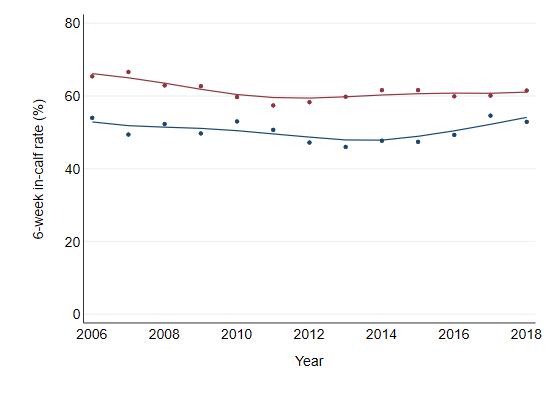
2 minute read
4. Fertility
Key points: Jerseys have higher fertility than Holsteins. This is likely to be due to genetic selection and energy metabolism, particularly in the transition period and early lactation The mean daughter fertility breeding value for sires of Jersey cows has been flat or declining for four decades, whereas that of sires of Holstein cows is now increasing. If these trajectories continue, the fertility advantage of Jerseys over Holsteins may be reduced Available evidence suggests that in the transition period and early lactation, Jerseys remain in negative energy balance (NEB) for a shorter period of time relative to Holsteins and that the magnitude of Jerseys’ NEB is less than that of Holsteins
When respondents were asked to give their level of agreement with the statement ‘Jerseys are more fertile than other breeds’: 73% agreed or strongly agreed, 17% disagreed or strongly disagreed, and 10% were unsure.
Advertisement
It is well accepted globally that, generally, Jerseys have higher fertility than Holsteins. Analysis of Australian herd recording data held by DataGene shows that the reproductive performance of Jerseys has been consistently higher than that of Holsteins for many years (Figure 7a,b).
Jersey cows
Holstein cows Jersey cows
Holstein cows
(a)
(b)
Figure 7. Reproductive performance of (a) seasonal/split calving herds in Australia, and (b) yearround calving herds. Blue points and line of best fit represent Holstein herds. Red points and line represent Jersey herds [DataGene, 2021].

Reproductive physiology
After calving, Jerseys return to oestrus sooner, often exhibit a stronger and better observed oestrus and remain in heat longer than Holsteins. They also breed back earlier with fewer services per conception and stay in the milking herd longer. There is very little available evidence of differences in the reproductive physiology between the two breeds that may contribute to these differences in fertility. The number of days to the involution of the cervix and uterus have been found to be similar in Holsteins and Jerseys [Fonseca et al., 1983]. While Fonseca et al. (1983) found no significant difference in the progesterone profile of blood collected from the two breeds before or after insemination, a later study found that Holstein cows had a lower percentage of cows achieving >1 ng/ml progesterone in plasma by 30 days in milk than Jerseys, which is indicative of delayed return to oestrus and fewer successful pregnancies [Brown et al., 2012]. Any differences in insulin, NEFA and IGF-1 levels in Jersey and Holstein cows observed by Brown et al. (2012) may have been more a reflection of the milk yield and energy balance in these animals.









